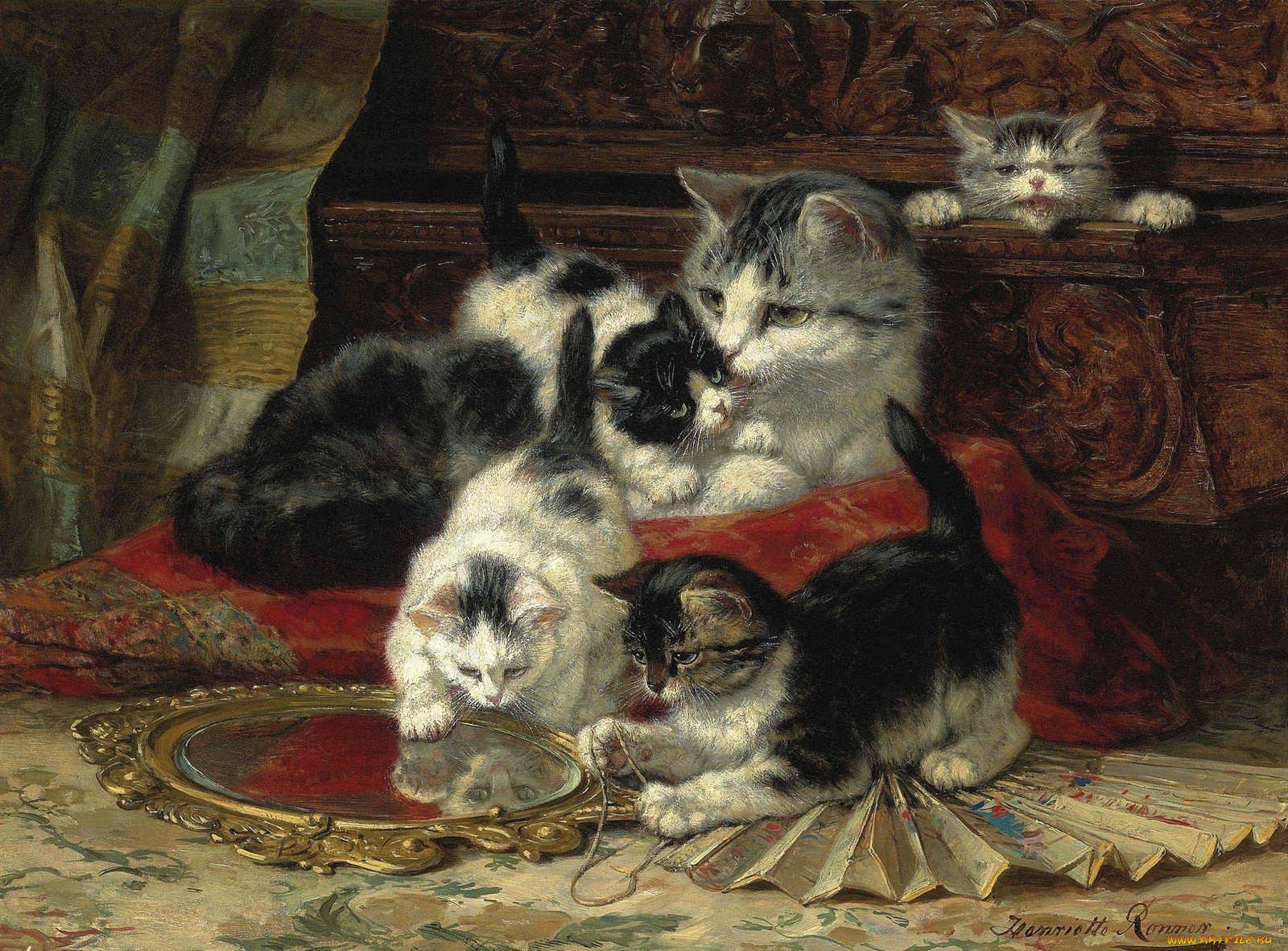Article from Chris Crombé
We all know, almost without thinking, famous male painters like, Rembrandt, Rubens, Van Dijck, Cézanne, Van Gogh etc. But if we have to cite a female one our memory fails. And still they were there. In one of my articles I will try to explain the raison of this phenomena. But I start as a trigger with one of an not very well known, but exceptional talented animal painter.
Cats have been a favorite subject of artists for many decades, and many big names in the art world have produced impressive works. One of them is Henriette Ronner-Knip.
HENRIËTTE RONNER-KNIP (1821 – 1909)
Henriette Ronner, born KNIP, was born on the 21st of may 1821 in Amsterdam. Her father, grand-father , uncle and one of her aunts, where fine artists too. All four of them had talent, but fame is precarious and they where forgotten over the ages.
On an age where most girls plays with dolls, Henriette was only interested for her father’s paint brushes. His work and explanations were as fascinating for her as the electronic games are for the contemporary youth.
At 11 years old she received an easel, which was the beginning of a productive existence as a painter.
The education she received was countless hours of lessons with her father in his atelier.
While her father focused on painting historical works and portraits, genres that sold better at the time, the young Henriette focused more on landscapes and animals.
A first artwork exposed in 1836 in Dusseldorf was immediately sold. The girl was only 15 years old.
Thanks to this talent, she could, three years later, provide in the maintenance of her family
Her favourite subjects at that time where rural, market and interior scenes, always including animals sometimes cows, horses and sheep , but especially dogs.
In 1850, three years after the dead of her father she married Feico Ronner. Her young husband had unfortunately a bad health. Also Henriette became ill. On the advice of her doctor, the family moved to Brussels.
The first years in Belgium were very difficult. No money and not welcome. Nearly 20 years after the expulsion of the house of Orange (The Dutch occupier) Dutch people were not very much liked in Belgium.
Not only the lack of money was her handicap, but also her congenital shyness. Probably strengthened by the fact that she was kept in isolation, during her youth, by her father.
Public appearances were a torture for her. With the consequence that she was rated by her colleagues as proud-heated and disapprovingly.
Undoubtedly her main issue for her artwork , the cat, is the result of her sequestered life style.
Where indeed could she find her inspiration between the four walls of her studio. Even a dog was a problem. They have to take a walk, their nutrition is expensive and some dogs need a lot of space.
Yet, Henriette disposed a warm heart towards these man’s best friend. Few artists succeeded to reproduce these animals in such a sensitive and emphatically way. They were mostly the less beloved mutts that roamed the streets of Brussels that she painted and sketched. With these works she made her name as a painter of dogs. Even the Queen of Belgium and her sister, the Countess of Flanders, had their dogs’ portraits done by Henriette.
But after a while only the cat remained. When her first cat has given birth to a lot of kittens, Henriette disposed of an endless source of models. Whose expressions, attitudes, moods, chances every second and moreover costs nothing. So decided Henriette to dedicate all her time and talent at the painting of cats. Because, at the end of the 19th century, the cat suddenly was elevated into a classy animal. Cat shows were organized where these animals sat on satin pillows and admired by an elegant public. Henriette took advantage of the new trend.
She painted hundreds of cats, romping in the cozy and comfortable 19th century interiors. Tumbling on the piano, playing with wool, sleeping at their mother’s side, hanging from a curtain; every conceivable scene was put to canvas.
During and after her life the artwork of Henriette Ronner were popular. She was no avant-gardist.
But we should not forget, that at the time it was not easy for women to break loose from the dominant norms. Most women painters where limited to flowers, the “real work” was the domain of the male artist. However Ronner-Knip was one the few female painters who could finance her family.
Henriette Ronner loved cats and in return for this love they gave her the most prestigious gift: immortality.
Duvosquel Jean-Marie, Cruysmans Philippe, “Dictionaire van Belgische en Hollandse dierenschilders”; Berco, 1998 , 545 p
Marius, Dutch Painters of the 19th Century, z.pl., 1973;.
C. Stellweg, Twee vrouwen over katten, Alphen aan de Rijn, 1981;
H.J. Kraaij, Henriette Ronner-Knip, (Schiedam), (1998);
W. & G. Pas, Dictionnaire biographique arts plastiques en Belgique. Peintres-sculpteurs-graveurs 1800-2002, Antwerpen, 2002.






